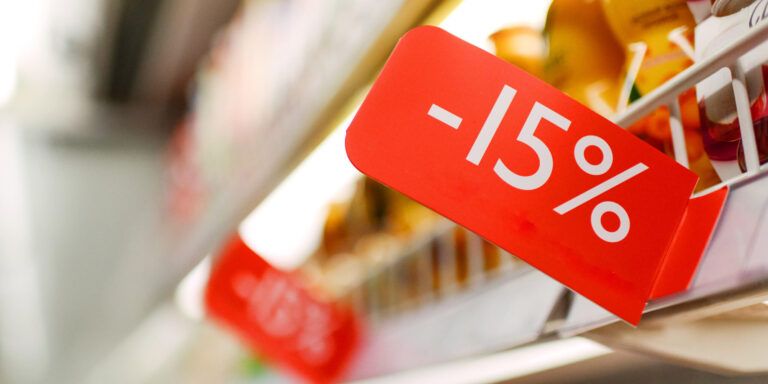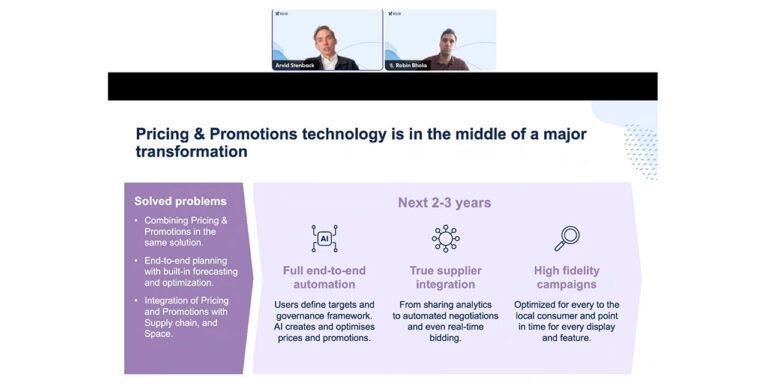One Sunday afternoon, a customer pops into her favorite local grocery store and goes about checking items off her list. She picks up a few of her usual items before looking at the price of the chicken she was planning on making for dinner. She double-checks how much she’s spending to ensure that the chicken fits in her weekly budget before adding it to her cart.
This scenario might seem like a very simple transaction, but nothing was simple about the planning that went into that moment. In fact, price planning is often full of manual processes with a lot of data sources, spreadsheets, and moving parts and pieces.
Not only is pricing complex, but also a crucial aspect of any retail business. Successful planners know that effective pricing involves setting the right price for the right products as well as maintaining the balance of when to be competitive with pricing decisions and when to prioritize margins.
While pricing planners have gotten used to navigating competitor prices, supplier negotiations, and customer expectations, new obstacles are making it harder for planners to provide the stable prices that customers expect.
Retail price inflation, limited resources, and increases in the cost of goods sold have made adhering to pricing strategies a bit more difficult. Add in the fact that budgets are stretched, and customers have less money in their wallets, and the already complex puzzle of pricing has gotten even more chaotic. Balancing the thousands of daily moving data pieces needed to stay competitive is often extremely time-consuming–not to mention the process lacks the granularity to optimize pricing effectively.
However, with the advent of pricing software, retailers can automate the day-to-day, clear-cut planning tasks and let humans put their brainpower into the most strategic decisions for their company.
Benefits of a Pricing Technology
Effective pricing technology offers retailers several benefits, including consistent pricing across the price hierarchy and customer offering, the ability to execute business-specific pricing strategies, and the ability to make decisions at a product or location level.
A solution can support the entirety of a retailer’s complex pricing strategy, including factors such as market trends and competitor pricing, as well as key value items (KVIs), to ensure that prices remain consistent across all channels and locations.
Effective pricing technology can even help a retailer customize their pricing strategy by providing them with the ability to set pricing rules and strategies at different levels of granularity.
Additionally, retailers can automate pricing updates and adjustments based on predefined rules and triggers, allowing for quick responses to changes in the market and optimization of their pricing strategy for maximum profitability. When a pricing decision becomes strategically or commercially important, human planners can step in. Whether the decision involves managing a key competitive category or a product with a large impact on margins, planners can review the pricing suggestions and refuse or approve them based on their expertise.
What to look for in a pricing solution
When looking for an effective pricing solution, retailers should ensure that the technology provides:
- Support for a retailer’s pricing strategy, no matter how complex
- Data visibility that allows for efficient cross-team planning and collaboration
- Seamless interaction between price, promotions, and other business operations
- Effective scenario planning that delivers insight into the potential impact of pricing decisions
- Automation of basic tasks, which allows humans to focus their attention on strategic business decisions
- Sufficient granularity for optimal decision-making at the store level
When a retailer’s pricing strategy is properly supported and optimized, it can help a retailer increase sales, improve margins, and gain a competitive advantage. Technology can help retailers analyze data, monitor market trends, and adjust prices in real-time to optimize their pricing strategy, leading to increased profitability and customer satisfaction.
A collaborative solution further helps planners by providing a shared data stream across planning activities, allowing for better collaboration and visibility between different teams. This communication can lead to improved accuracy and efficiency between pricing, promotion, and other merchandising teams while supporting each team’s operations. The system can, for example, ensure that prices don’t cannibalize a scheduled promotion or verify that promotions are legally compliant with regional pricing laws.
Scenario planning enables pricing teams to plan and test different pricing strategies in advance, allowing them to make better-informed decisions and catch errors and inconsistencies. By simulating the effects of different pricing scenarios, pricing planners can identify the most effective pricing strategy for different seasons, promotions, and logistics changes.
By automating routine tasks such as data collection, analysis, and pricing rule application, pricing planners can focus on more strategic tasks, such as identifying pricing opportunities and developing pricing strategies. Additionally, automation can help pricing planners respond more quickly to changes in the market and customer demand instead of getting bogged down with manual day-to-day tasks.
A retailer should look for a pricing solution that can handle detailed data such as individual products and product categories at the individual store level. With this type of detail, retailers can make optimal decisions for their individual stores rather than forcing a one-size-fits-all solution across their organization.
Deciding to invest in pricing technology
While pricing technology clearly offers several benefits, there are still some barriers and challenges to overcome.
In an area of planning familiar with handling manual processes, there is a degree of trust that must be earned by pricing technology. Concerns about change management and limited resources can also make it challenging to decide on an investment in a pricing solution. However, a pricing solution that has proven that it can meet a retailer’s needs will help make these challenges and changes feel less painful.
If a retailer is still considering whether a pricing solution will be a good investment, they should consider what their goals are and where technology might be able to support them:
- How advanced do they want their pricing strategy to be?
- What pricing maturity are they aiming to achieve?
- Is their pricing strategy keeping up with the competition?
- How much central control do they want over their pricing?
- What business strategies can their planners focus on if the daily repetitive tasks are automated?
The best thing to remember is that technology can help automate low-stakes, time-consuming tasks and give the time and power back to the people who are making the plans. The right solution will automate the day-to-day complexities of crunching the numbers and let human decision-makers focus on the strategic choices that will best serve the business.





